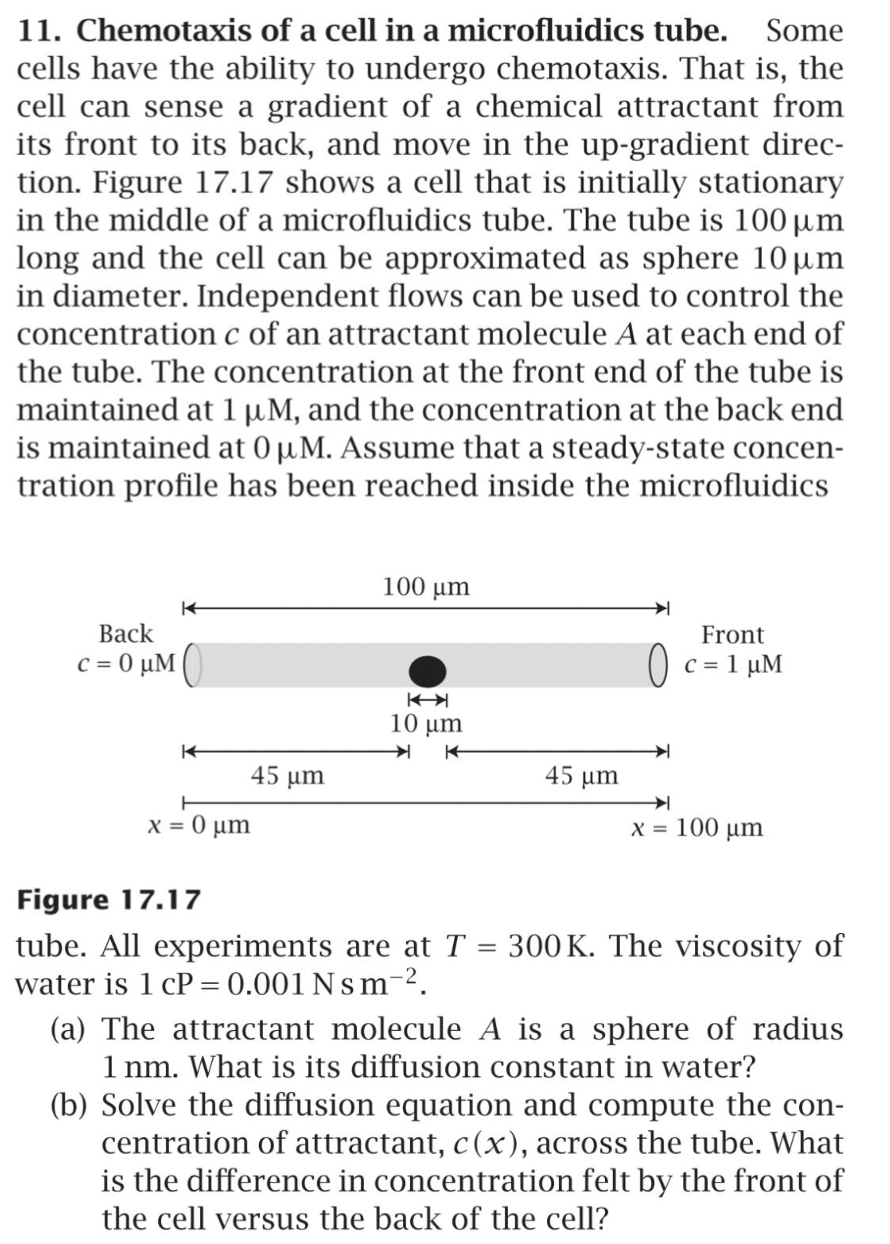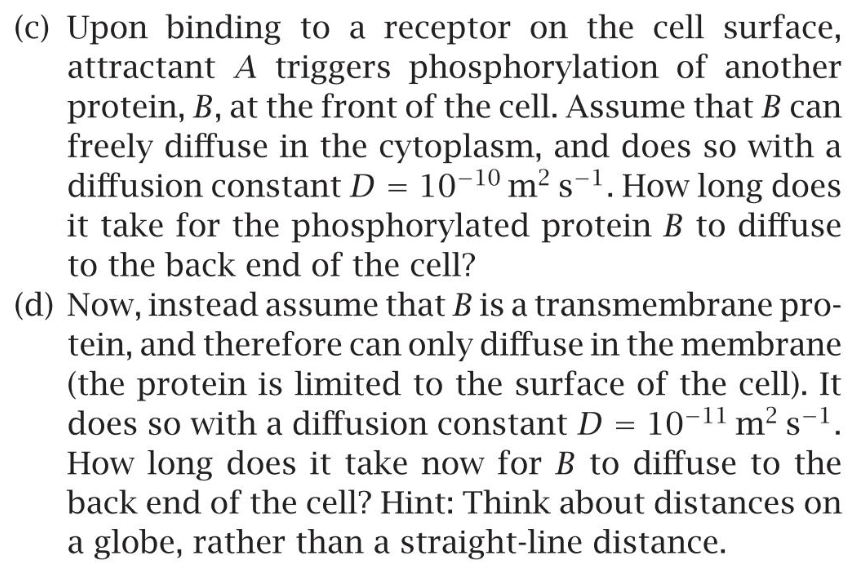Home /
Expert Answers /
Chemical Engineering /
11-chemotaxis-of-a-cell-in-a-microfluidics-tube-some-cells-have-the-ability-to-undergo-chemotax-pa589
(Solved): 11. Chemotaxis of a cell in a microfluidics tube. Some cells have the ability to undergo chemotax ...


11. Chemotaxis of a cell in a microfluidics tube. Some cells have the ability to undergo chemotaxis. That is, the cell can sense a gradient of a chemical attractant from its front to its back, and move in the up-gradient direction. Figure 17.17 shows a cell that is initially stationary in the middle of a microfluidics tube. The tube is long and the cell can be approximated as sphere in diameter. Independent flows can be used to control the concentration of an attractant molecule at each end of the tube. The concentration at the front end of the tube is maintained at , and the concentration at the back end is maintained at . Assume that a steady-state concentration profile has been reached inside the microfluidics Figure 17.17 tube. All experiments are at . The viscosity of water is . (a) The attractant molecule is a sphere of radius . What is its diffusion constant in water? (b) Solve the diffusion equation and compute the concentration of attractant, , across the tube. What is the difference in concentration felt by the front of the cell versus the back of the cell?
(c) Upon binding to a receptor on the cell surface, attractant triggers phosphorylation of another protein, , at the front of the cell. Assume that can freely diffuse in the cytoplasm, and does so with a diffusion constant . How long does it take for the phosphorylated protein to diffuse to the back end of the cell? (d) Now, instead assume that is a transmembrane protein, and therefore can only diffuse in the membrane (the protein is limited to the surface of the cell). It does so with a diffusion constant . How long does it take now for to diffuse to the back end of the cell? Hint: Think about distances on a globe, rather than a straight-line distance.